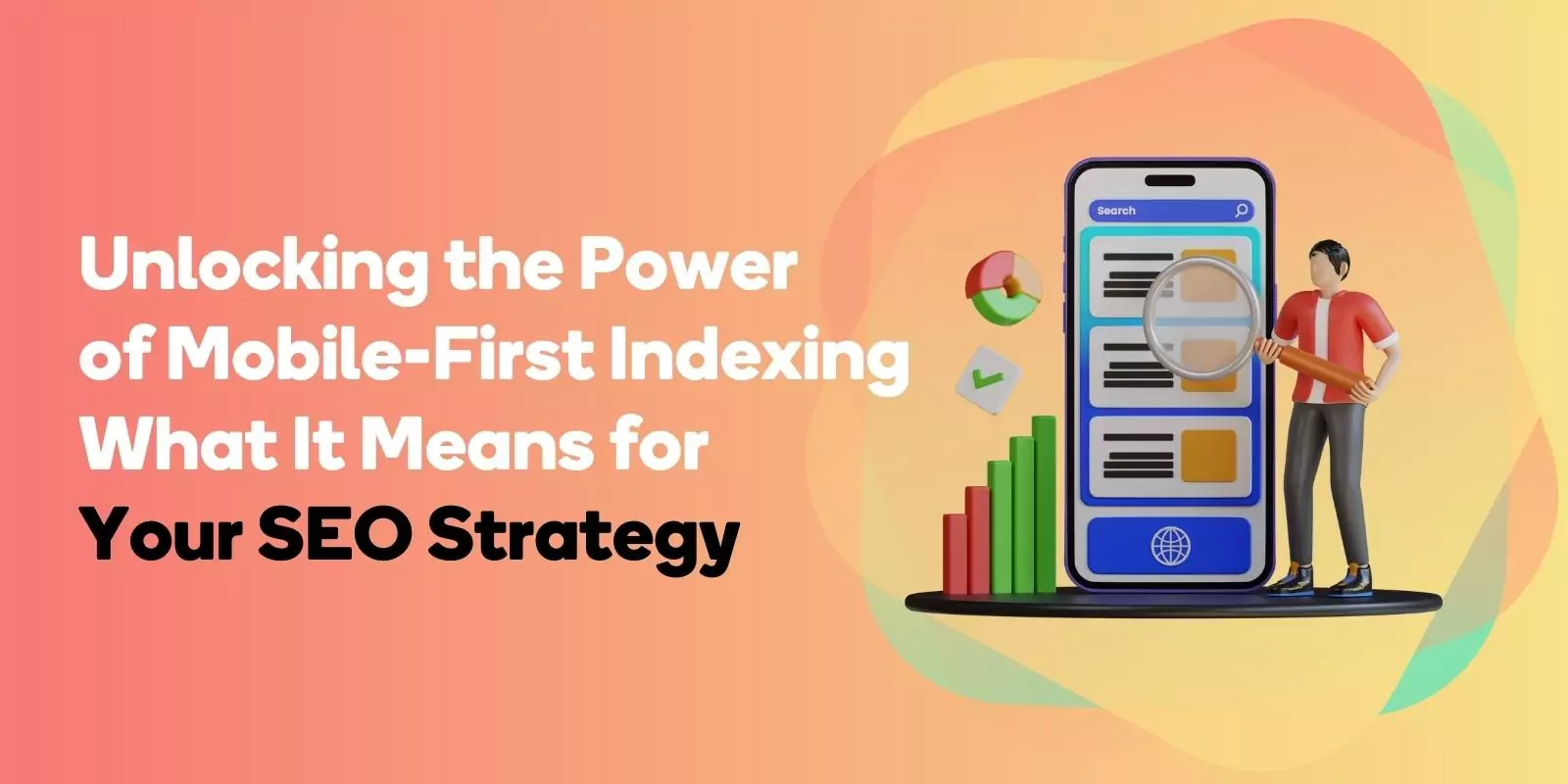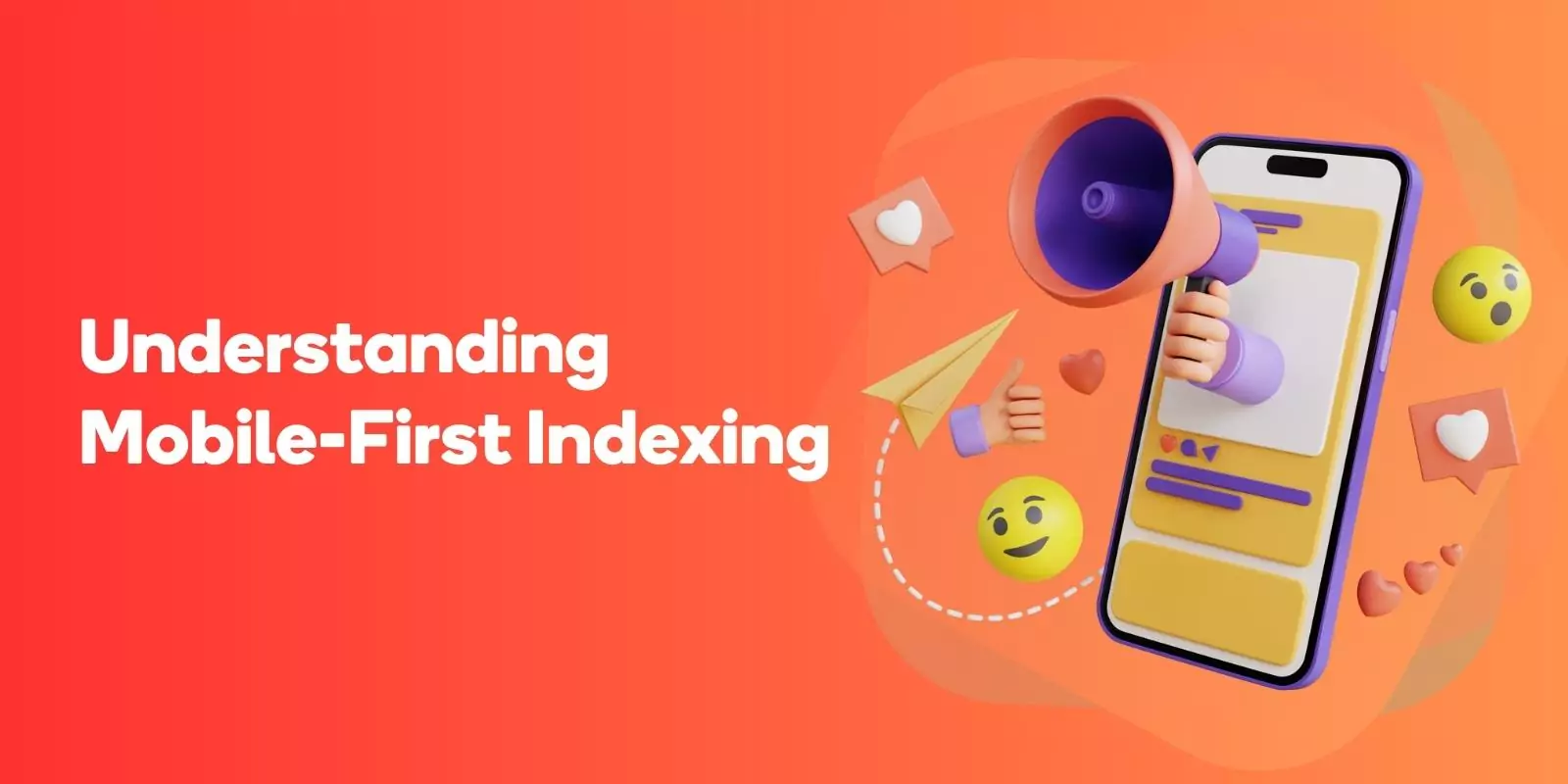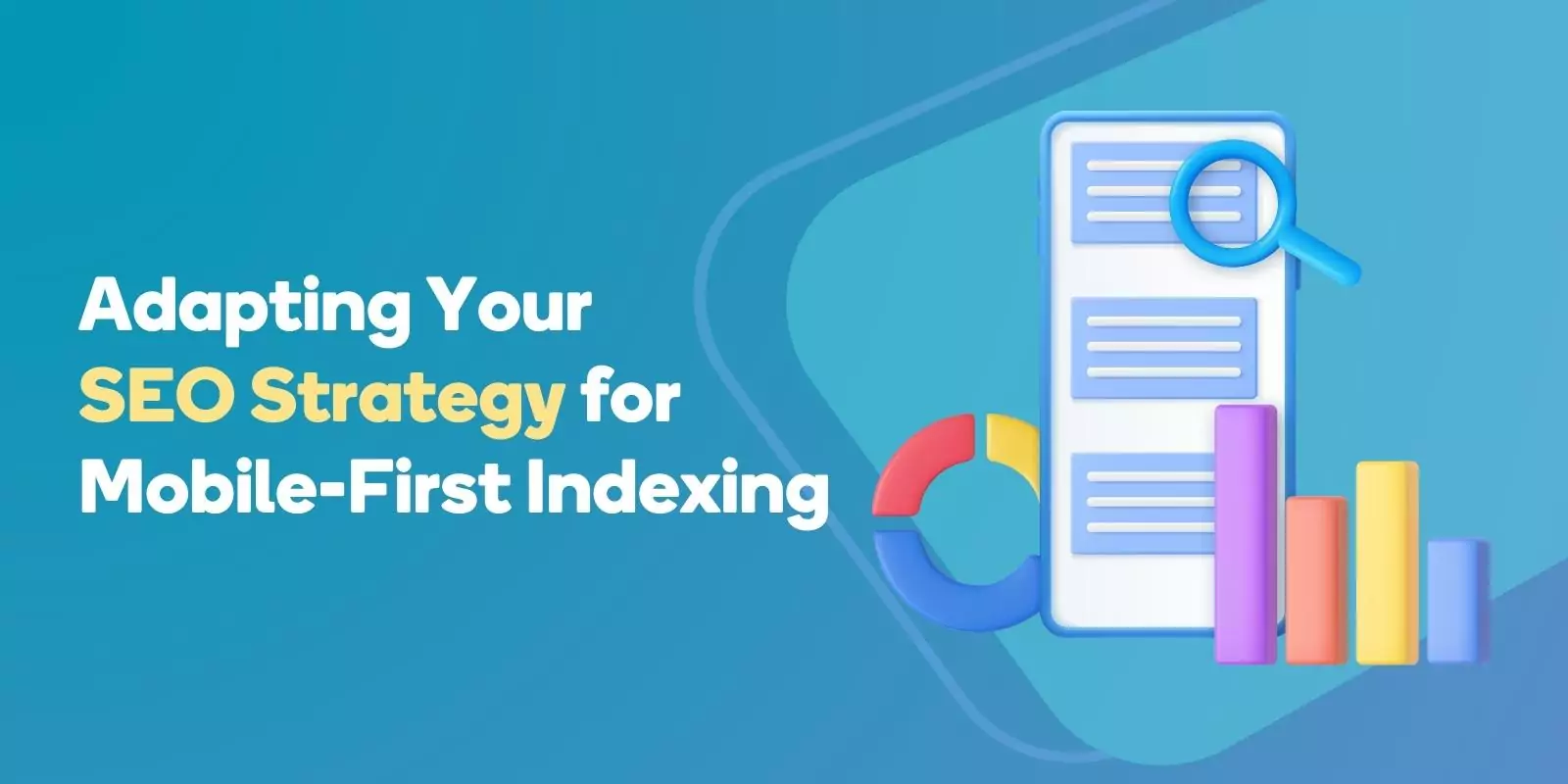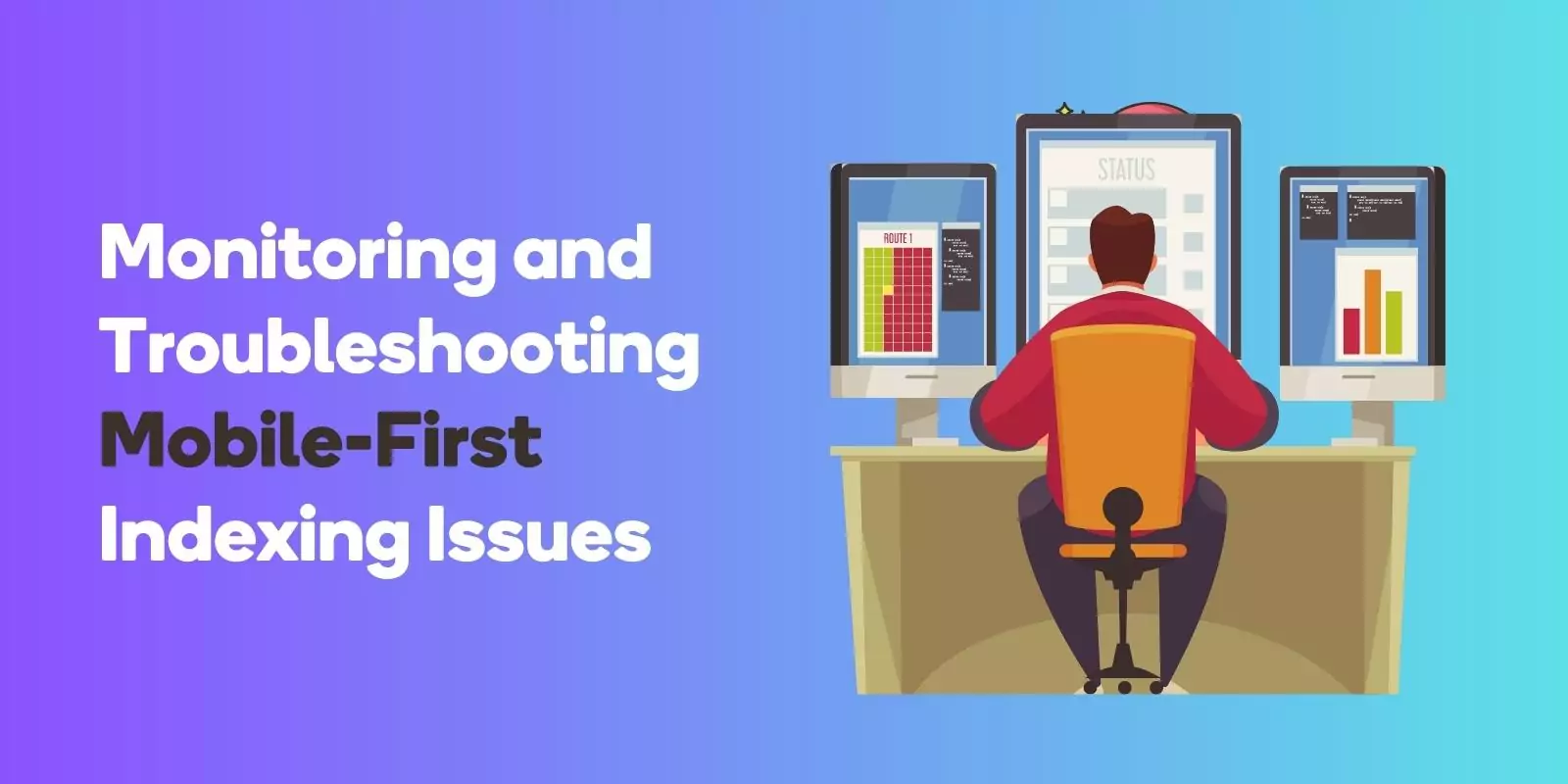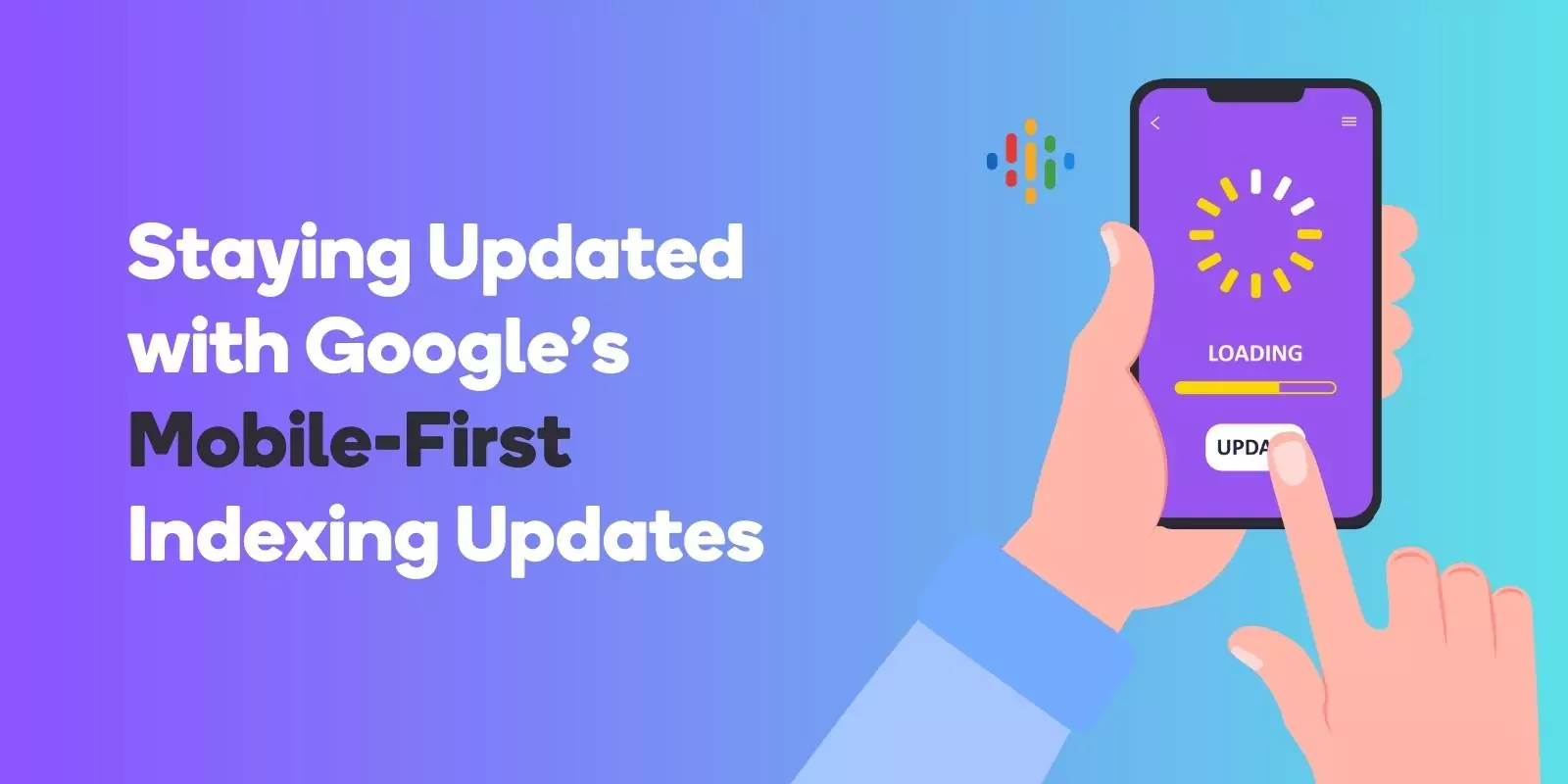In this blog post, we’ll dive deep into what mobile-first indexing means and explore the necessary adjustments to ensure your website stays competitive in this ever-evolving digital world.
Understanding Mobile-First Indexing
Mobile-first indexing is a game-changer in the world of SEO. As the name suggests, it prioritizes the mobile versions of websites for ranking and indexing purposes.
This approach was introduced by Google to cater to the ever-growing number of mobile users, who now make up the majority of search engine users.
With this shift in user behavior, it’s more important than ever for businesses to optimize their websites for mobile devices.
Definition of Mobile-First Indexing
Google places priority on the mobile version of a website’s content for ranking and indexing purposes, hence the term “Mobile-first indexing”. This approach was implemented in response to the increasing number of mobile users accessing the internet, overtaking desktop users in recent years.
To ensure successful mobile-first indexing, it is critical to maintain consistency in content, titles, meta descriptions, and meta robots tags across both desktop and mobile versions of a website.
This consistency allows Google to index and rank your website accurately, providing the best possible user experience for your audience.
The Shift in User Behavior
The rise of mobile-first indexing has resulted in a significant shift in user behavior, with more people now accessing websites on mobile devices than on desktop computers.
This change has had a considerable impact on search engine algorithms, with Google prioritizing mobile-friendly websites in search results.
As a result, websites optimized for mobile devices are more likely to rank higher in search engine results, while those that are not mobile-friendly may see a decrease in traffic.
Furthermore, the importance of page speed for mobile-first indexing is critical, as slow-loading websites can negatively affect user experience and search engine rankings.
Adapting Your SEO Strategy for Mobile-First Indexing
Adapting your SEO strategy for mobile-first indexing is not just about making your website look good on mobile devices.
It’s about ensuring your content is consistent and accessible for both desktop and mobile users, optimizing your website’s speed and performance, and focusing on key elements that make your website truly mobile-friendly.
In the following sections, we will discuss essential considerations for mobile-first SEO, such as structured data consistency, mobile-friendly media, metadata, and meta tags.
Additionally, we will explore techniques for monitoring and troubleshooting mobile-first indexing issues and staying up-to-date with Google’s mobile-first indexing updates.
Importance of Mobile-Optimized Content
Mobile-optimized content is crucial for providing an optimal user experience on mobile devices. Ensuring your website’s content displays correctly on mobile and desktop site and functions properly on mobile devices is essential for maintaining a strong online presence in a mobile-first world.
One way to ensure content is accessible for all mobile users is to provide transcripts for videos, as not all users may be able to watch or listen to them.
Additionally, maintaining consistency in content across both desktop sites and mobile sites is vital, allowing Google to crawl the same content on both versions and index your website accurately.
Speed and Performance Optimization
A fast-loading and high-performing website is vital for providing an excellent user experience and establishing a lasting positive impression among customers.
Optimizing your website’s speed and performance can be achieved through various strategies, such as optimizing images, reducing server response time, and minimizing the amount of code required to load the page.
Leveraging caching and content delivery networks can also help minimize page load times, further enhancing your website’s speed and performance on mobile devices.
Additionally, utilizing tools like SEMRush and Ahrefs site audit tools can assist in identifying areas of improvement for your website’s mobile performance.
Key Elements to Focus on for Mobile-First SEO
To make your website truly mobile-friendly and optimize it for mobile-first indexing, there are several key elements you should focus on.
Ensuring structured data is consistent, optimizing media for mobile devices, and utilizing metadata and meta tags are all essential aspects of a successful mobile-first SEO strategy.
In the following sections, we will delve deeper into these key elements and provide practical tips and guidelines to help you optimize your website for mobile-first indexing.
Structured Data Consistency
Structured data plays an essential role in mobile-first indexing, as it helps search engines understand the content of your website more effectively. Ensuring your structured data is present and consistent on both desktop versions and mobile versions of your website is crucial for maintaining a strong online presence in a mobile-first world.
To achieve this consistency, make sure the URLs in your structured data are updated to match the mobile URLs and that the same structured data is present on both desktop and mobile versions of your website.
This will help Google accurately index and rank your website based on its desktop and mobile version only.
Mobile-Friendly Media
Optimizing images and videos for mobile devices is crucial for providing an optimal user experience on mobile websites.
To ensure your website’s media is mobile-friendly, keep file sizes to a minimum, compress images, and optimize videos for streaming.
Additionally, make sure your images and videos are responsive and can be viewed on any device, regardless of screen size or resolution.
This will help provide a seamless experience for your users on both desktop and mobile devices, contributing to a higher ranking separate mobile site in search engine results.
Metadata and Meta Tags
Metadata and meta tags are crucial elements of a successful mobile-first SEO strategy. These snippets of text describe the primary content part of a page and help search engines understand the context of your website.
Ensuring consistency in titles, meta descriptions, and meta robots tags across both desktop and mobile versions of your site is vital for maintaining a strong online presence in a mobile-first world.
This will help Google accurately index and rank your website based on its mobile version, providing the best possible user experience for your audience.

Award-Winning
Sales Funnel & Website Expert
Discover How My Agency Can Grow Your Business
- Website: Our websites are the perfect blend of form and function.
- Sales Funnel: We build sales funnels that turn leads into customers.
- SEO: Get found online with our expert SEO services.
Monitoring and Troubleshooting Mobile-First Indexing Issues
As you adapt your website for mobile-first indexing, it’s essential to monitor and troubleshoot any potential issues that may arise.
Identifying and resolving these issues can help you maintain a strong online presence and ensure your website remains competitive in the ever-evolving digital landscape.
In this section, we will discuss techniques for monitoring and troubleshooting mobile-first indexing issues, including using Google Search Console and addressing common mobile first index and site mistakes.
Using Google Search Console
Google Search Console is a powerful tool for monitoring and optimizing your website’s presence in Google and mobile search results alone.
By regularly reviewing Core Web Vitals reports, you can identify and address any mobile errors that may be impacting your website’s performance in search results.
Additionally, Google Search Console can help you identify potential errors and issues related to mobile-first indexing. By addressing these issues, you can ensure your website remains competitive in the mobile-first digital landscape.
Addressing Common Mobile Site Mistakes
Avoiding common mobile site design mistakes is crucial for maintaining a strong online presence in a mobile-first world.
Some common mistakes include using Flash, not using HTML5 tags, and not providing transcripts for videos.
By addressing these common mobile site mistakes and ensuring your website is optimized for mobile devices, you can maintain a strong online presence and ensure your website remains competitive in the ever-evolving digital landscape.
Staying Updated with Google’s Mobile-First Indexing Updates
Keeping up with Google’s updates and recommendations for mobile-first indexing is crucial for maintaining a strong online presence in a mobile-first world.
As Google continues to prioritize mobile-friendly websites in search results, it’s essential to stay informed about any new updates or changes that may affect your website’s performance.
In this section, we will discuss the importance of staying updated with Google’s mobile-first indexing updates, including the Page Experience update and Core Web Vitals.
Google PageSpeed Insights
Google PageSpeed Insights is a valuable tool for assessing the mobile-friendliness and speed of your website. By regularly using Google PageSpeed Insights, you can monitor your website’s performance and address any issues that may arise, ensuring your website remains competitive in the mobile-first digital landscape.
In addition to Google PageSpeed Insights, other tools like WebPageTest and GTMetrix can also help evaluate your website’s Core Web Vitals, providing valuable insights into your website’s performance on both mobile and desktop devices.
Better Ads Standard
Following the Better Ads Standard for your mobile pages and ad placement is essential for avoiding any negative impact on your mobile page ranking.
The Better Ads Standard is a set of guidelines developed by the Coalition for Better Ads, outlining ad experiences that do not meet consumer acceptability standards.
By adhering to the Better Ads Standard, you can ensure your ads comply with the guidelines and do not interfere with the user experience, ultimately contributing to a higher ranking in search engine results.
Conclusion
In conclusion, adapting your SEO strategy for mobile-first indexing is crucial for maintaining a strong online presence in the mobile-first digital landscape.
By focusing on key elements such as structured data consistency, mobile-friendly media, metadata, and meta tags, monitoring and troubleshooting mobile-first indexing issues, and staying updated with Google’s mobile-first indexing updates, you can optimize your website for mobile devices and ensure your website remains competitive in this ever-evolving digital world.
Now is the time to embrace the mobile-first revolution and unlock the power of mobile-first indexing for your SEO strategy.
Frequently Asked Questions
What does mobile first indexing mean?
Mobile-first indexing refers to Google’s practice of primarily using the mobile version of a website’s content for indexing and ranking. In the past, the index primarily used the desktop version of a page’s content, but as internet usage has increasingly shifted towards mobile devices, Google moved to mobile-first indexing to better serve mobile users.
When did Google start mobile first indexing?
Google first introduced mobile-first indexing in November 2016, and by December 2018, half of all sites in Google’s search results were from mobile-first indexing.
What does first indexed mean?
First indexed refers to the time when a webpage or website was first discovered and added to Google’s index. Indexing is a process by which search engines like Google collect, parse, and store data for use in retrieving and presenting information to users in response to relevant search queries. When a new webpage or website is created and Google’s web crawlers discover it, that’s when the page or site is first indexed.
What is the mobile first index quizlet?
The term “mobile first index quizlet” likely refers to educational resources or quizzes on the platform Quizlet that pertain to the topic of mobile-first indexing. Quizlet is an online learning platform that uses flashcards, quizzes, and games to help users learn a variety of topics.
The content on Quizlet is created by its community of users, so a “mobile first index quizlet” would be a set of flashcards or a quiz created by a user to help others understand the concept of mobile-first indexing.
What is mobile-first strategy?
A mobile-first strategy is an approach to website design and development where the mobile version of the website is designed and developed before the desktop version. This strategy is driven by the increasing predominance of mobile users.
In a mobile-first strategy, all the essential elements of website design such as navigation, content, and functionality, are designed with the mobile user in mind, ensuring the website is user-friendly and effective for mobile devices.
What is mobile-first content strategy?
A mobile-first content strategy is a method of content development and deployment that prioritizes mobile users. In this approach, content is designed, formatted, and optimized for mobile devices first, considering aspects like smaller screen sizes, touch-based navigation, and varying data speeds.
This strategy also often includes considerations for local SEO and voice search, given that mobile users are more likely to use voice commands and search for local information. Implementing a mobile-first content strategy can help businesses to reach and engage with their audience more effectively, given the growing prevalence of mobile device usage.
Conclusion
In conclusion, adapting your SEO strategy for mobile-first indexing is crucial for maintaining a strong online presence in the mobile-first digital landscape.
By focusing on key elements such as structured data consistency, mobile-friendly media, metadata, and meta tags, monitoring and troubleshooting mobile-first indexing issues, and staying updated with Google’s mobile-first indexing updates, you can optimize your website for mobile devices and ensure your website remains competitive in this ever-evolving digital world.
Now is the time to embrace the mobile-first revolution and unlock the power of mobile-first indexing for your SEO strategy.
